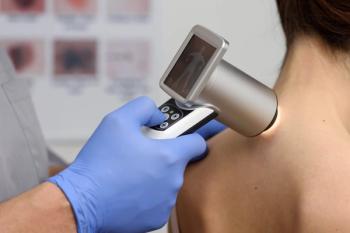
Managed care influences progressive medical-home model
National reports-The movement toward the patient-centered medical-home model has gained rapid momentum over the past year, marked by several watershed events.
In the summer of 2006, four key primary care physicians groups came together with IBM and other major employers to agree upon a set of joint principles that would define this model of healthcare delivery.
The physician groups and employers transformed their relationship into the Patient Centered Primary Care Collaborative (PCPCC), and the group met in September 2007 with health benefits companies. At that meeting, the health plans present embraced the concept of the medical home, joined the collaborative, and pledged to support the development of several pilot demonstrations.
MEDICAL HOMENESS
Recently, the National Committee for Quality Assurance (NCQA) released a new qualification program for measuring a primary care practice in terms of its "medical homeness."
The program, built upon NCQA's existing "Physician Practice Connections" recognition program, paves the way for practices that want to qualify as a medical home to measure their progress and work toward the achievement of specific service standards in order to enhance care, according to Jeff Van Ness, NCQA spokesman.
"It also guides employers and health plans that wish to identify high-performing primary care physicians when constructing a reimbursement system that rewards physicians who deliver care within the context of a functioning medical home," he says. "The criteria mirror pay-for-performance plans already in force among some health insurers."
NCQA hosted a policy conference recently to discuss the implications that the medical-home model would have with respect to policy, payment systems and quality of care. The NCQA standards will help employers and health plans identify high-performing primary care physicians with a view to construct a reimbursement system for physicians that rewards the provision of comprehensive care services within the context of a functioning medical home.
"The financial squeeze on primary care doctors threatens to produce a crisis for patient care," says MHE Editorial Advisor Joel V. Brill, MD, chief medical officer of Predictive Health LLC. "The patient-centered medical home is a model for a more efficient and cost-effective delivery of care. While payment reform is necessary . . . we need increased funding for healthcare, and not to rely on this being funded through redistribution of dollars from specialty care services. High-tech IT and high-touch care management need to be collaboratively integrated to help patients take responsibility for care and for their providers to assist them in achieving optimal care."
The purpose of a medical home is to realize the positive goals of the managed care movement, says Rogers.
"This is not a gatekeeper model at all, in fact, quite the opposite," she says. "It's about empowering patients by engaging them with a doctor who they know and trust, and can help them navigate our segmented, partialist medical system."
Paul Grundy, MD, IBM's director of health technology and strategic initiatives and chairman of the collaborative, agrees.
"Large, self-insured employers do not want to continue buying redundant medical tests, duplicate x-rays and ancillary referrals to competing specialists," he says. "Instead we want to spend that money on a primary care physician who will help our employees live healthier lifestyles . . . and coordinate the specialist care they receive to ensure it is relevantly and effectively performed and the patients can make sense of the consultation they've been given."
PCPCC recently announced its intent to use a set of clinical and operational criteria that will allow primary care practices to voluntarily be recognized as patient-centered medical homes.
Newsletter
Get the latest industry news, event updates, and more from Managed healthcare Executive.






















































